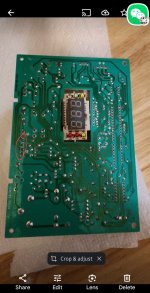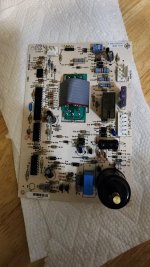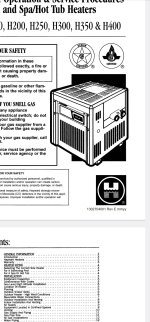Turning to TFP for help, thanks in advance.
I have a Hayward H250ed2c natural gas heater (2 ish years old).
It was working, but now controls seem to be dead, but can confirm there is power getting to the unit, and some current coming out of the 24vac transformer out line (how much I'm not sure, but NC voltmeter is beeping on that wire so I assume there is power getting to control board..)
Looking at the control pcb board I think these contacts in the red circle might have come loose, as the main wire harness on the other side seems loose.
Any ideas to trouble shoot? My asumption is that even if something else is the problem, the control board should power up in some manner and give me a sign of such if there is power getting to it via the 24vac in contact?
If so, that leads me to believe the potentially interrupted circuit line on the board could be the issue.
Any ideas? Ty
I have a Hayward H250ed2c natural gas heater (2 ish years old).
It was working, but now controls seem to be dead, but can confirm there is power getting to the unit, and some current coming out of the 24vac transformer out line (how much I'm not sure, but NC voltmeter is beeping on that wire so I assume there is power getting to control board..)
Looking at the control pcb board I think these contacts in the red circle might have come loose, as the main wire harness on the other side seems loose.
Any ideas to trouble shoot? My asumption is that even if something else is the problem, the control board should power up in some manner and give me a sign of such if there is power getting to it via the 24vac in contact?
If so, that leads me to believe the potentially interrupted circuit line on the board could be the issue.
Any ideas? Ty




